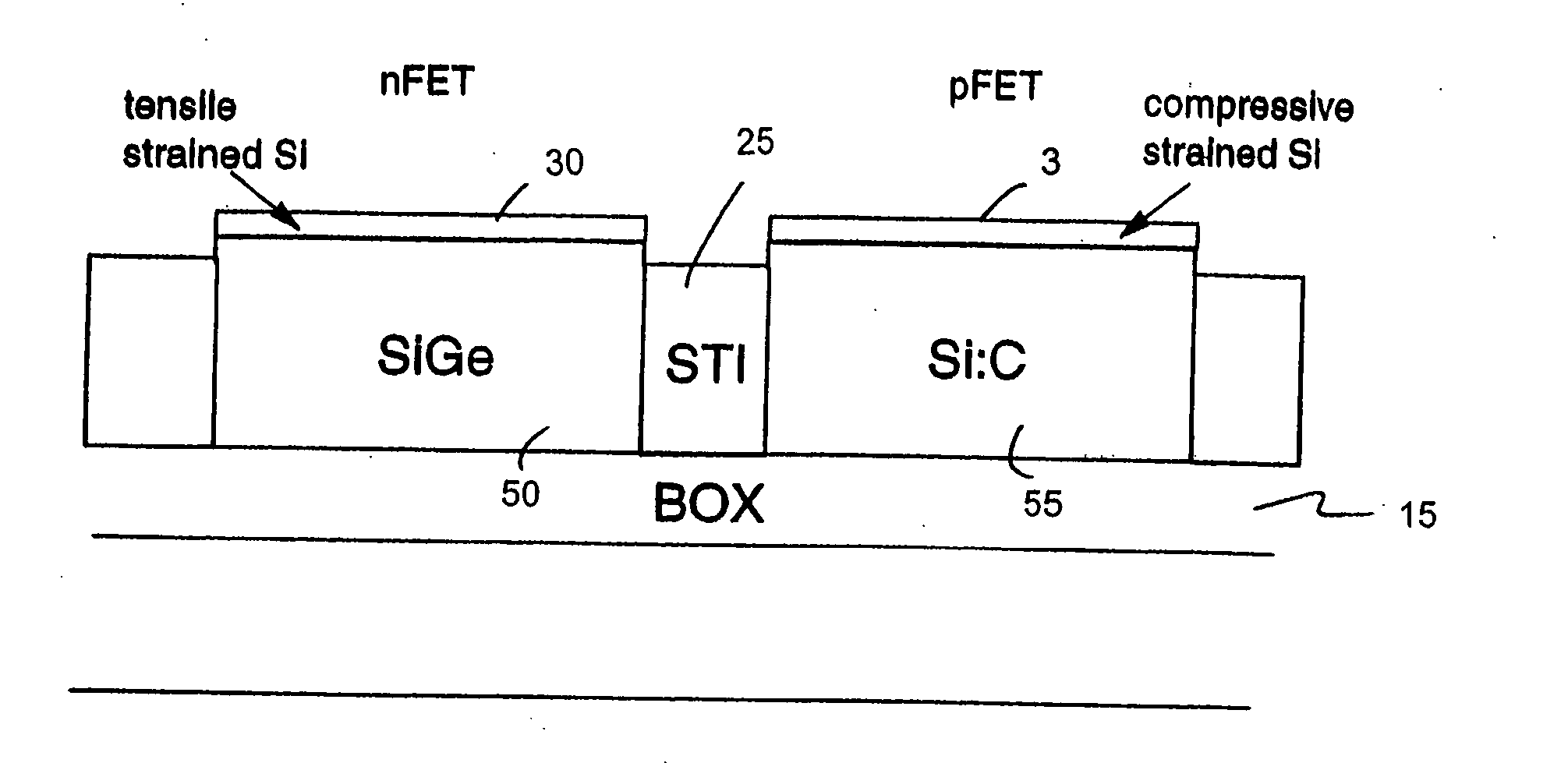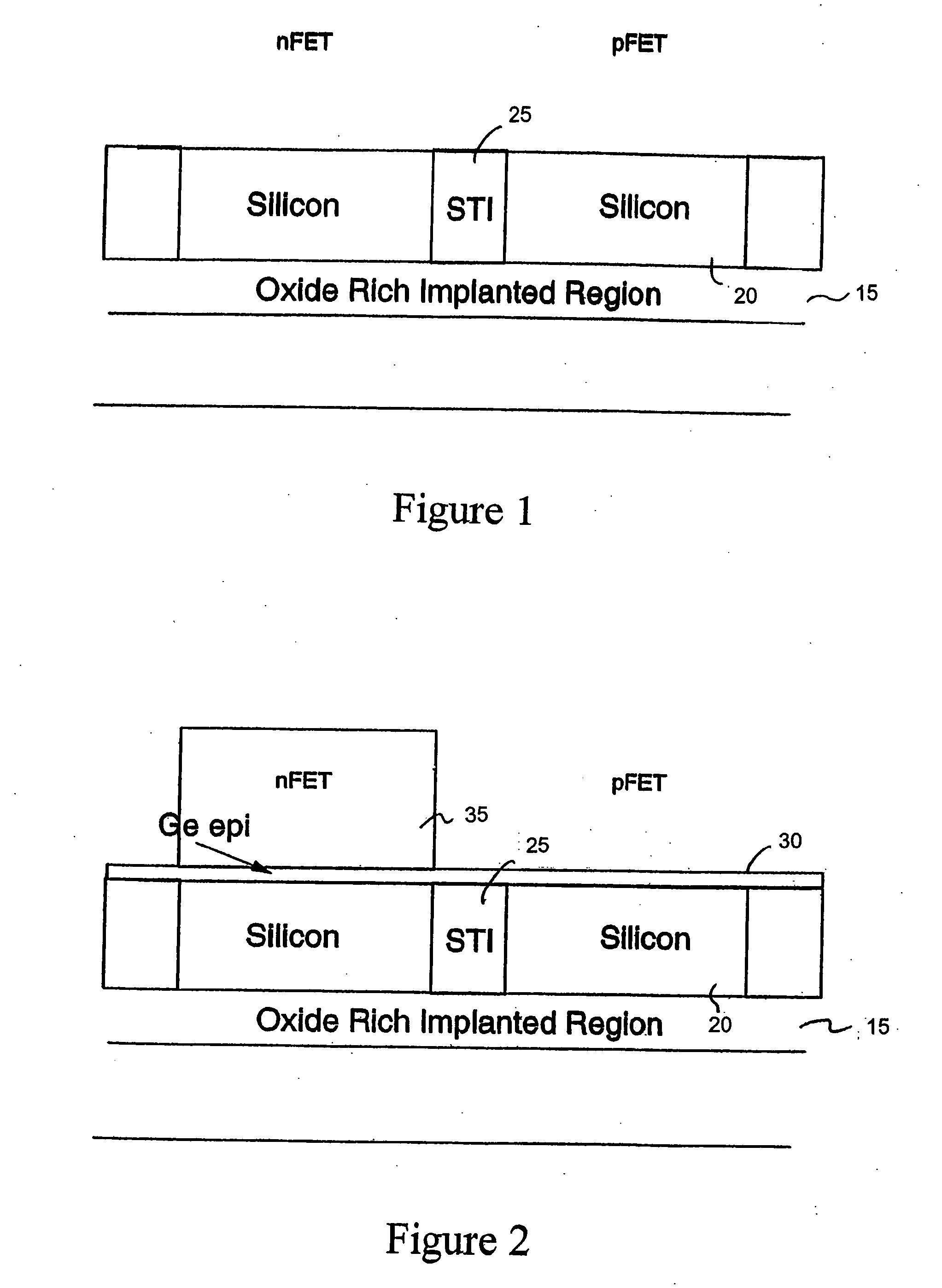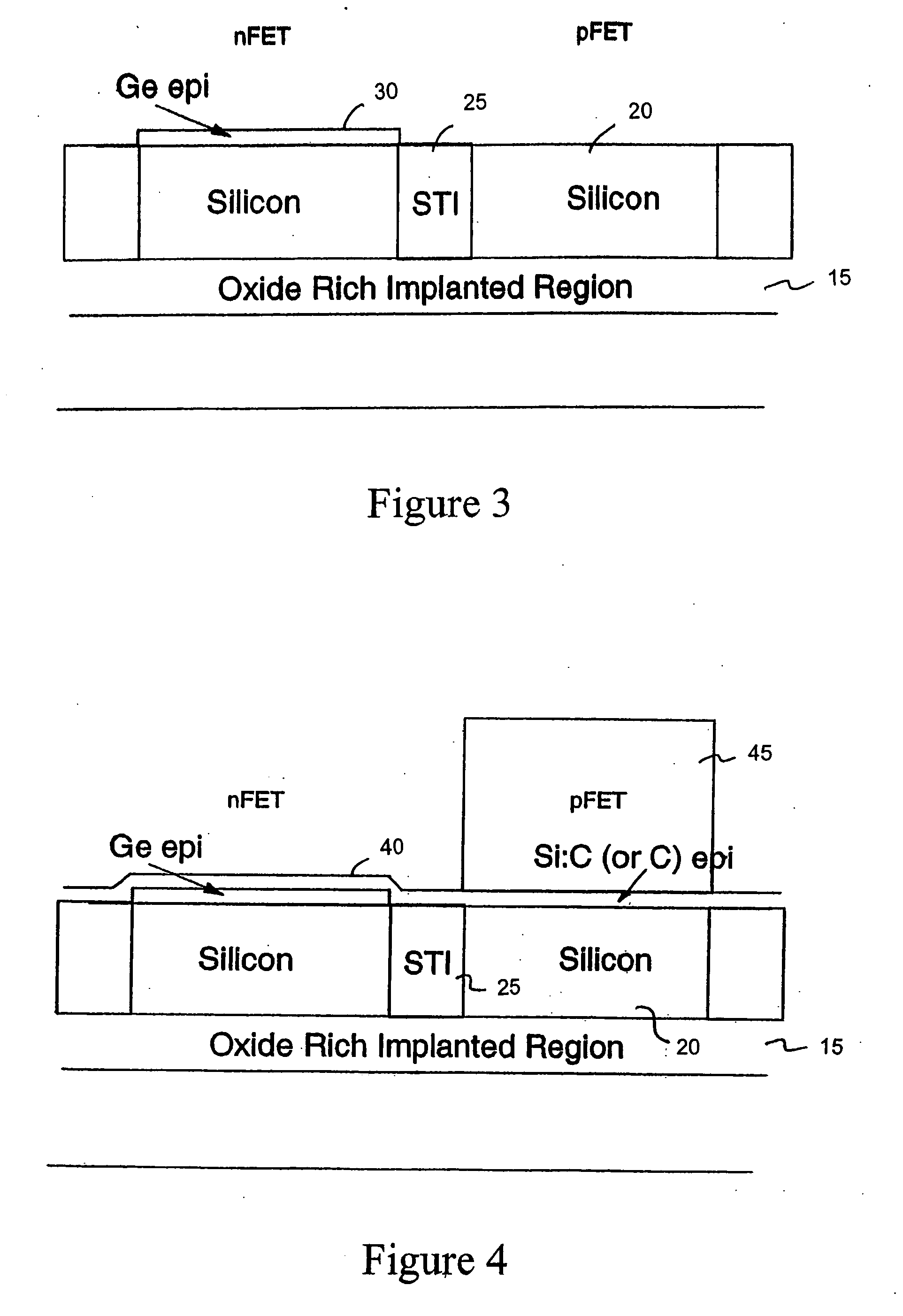Silicon device on Si:C-OI and SGOI and method of manufacture
- Summary
- Abstract
- Description
- Claims
- Application Information
AI Technical Summary
Benefits of technology
Problems solved by technology
Method used
Image
Examples
Embodiment Construction
[0022] This invention is directed to a semiconductor device and method of manufacture which provides desired stresses in the nFET channel and the pFET channel of CMOS devices for improved device performance. In one approach, a SiGe island is obtained through thermally mixing deposited Ge material into an SOI thin film. Similarly, a Si:C island is obtained through thermally mixing deposited Si:C or C into the Si or SOI thin film. By using the method of the invention, the required Ge % is not large and thus does not cause defect issues. Also, relaxation of SiGe and / or Si:C islands in the channels of the pFET and nFET, respectively, can be achieved by the invention to thus provide improved performance as compared to blanket (SiGe or Si:C) substrates. This is because, in the implementations of the invention, a high temperature thermal mixing step, for example, is provided such that shallow trench isolation (STI) can relax and facilitate the relaxation of the SiGe and Si:C islands.
[0023...
PUM
 Login to View More
Login to View More Abstract
Description
Claims
Application Information
 Login to View More
Login to View More - R&D
- Intellectual Property
- Life Sciences
- Materials
- Tech Scout
- Unparalleled Data Quality
- Higher Quality Content
- 60% Fewer Hallucinations
Browse by: Latest US Patents, China's latest patents, Technical Efficacy Thesaurus, Application Domain, Technology Topic, Popular Technical Reports.
© 2025 PatSnap. All rights reserved.Legal|Privacy policy|Modern Slavery Act Transparency Statement|Sitemap|About US| Contact US: help@patsnap.com



